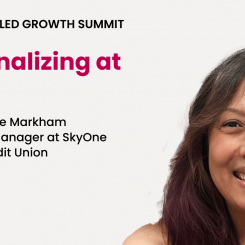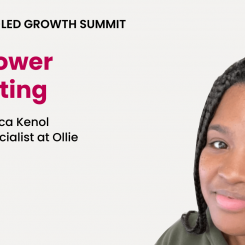Referral marketing is one of the fintech industry’s most powerful user acquisition tactic. Most banks and fintech companies have started using it to gain leads and loyal customers. But each referral marketing program is different.
Robinhood is a widely successful stock trading application that empowers average wage earners to trade on the stock market and a fintech darling. Robinhood used a simple but unique take on referral marketing to build hype and increase trust, which drove nearly a million signups before they even launched. Their strategy is replicable, if not simple, and can achieve results if implemented correctly.
Robinhood Used Hype to Get Nearly a Million Signups Pre-Launch
Robinhood had one main driver at the foundation of their unique referral program: hype. They got their target market excited about the idea of their platform, which led to their target market telling friends and family members all about the emerging fintech application.
The fintech startup started talking about their product and mission a year and a half before they launched their mobile trading application. They branded themselves as an unconventional, cause-driven startup that wanted to make stock trading more affordable and accessible to the general public by omitting trade commissions.
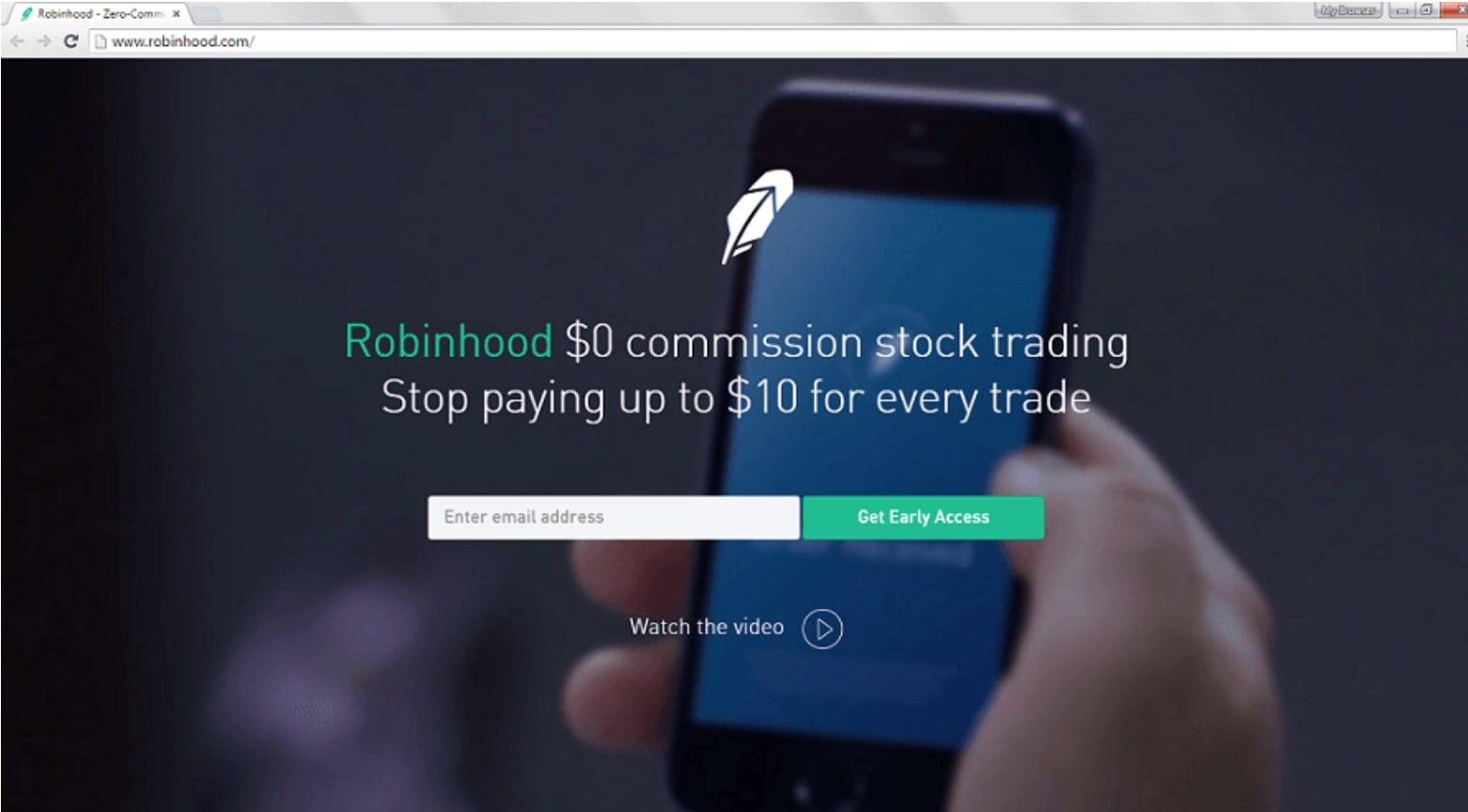
[source] Definition: Robinhood’s pre-launch landing page
Their company name, Robinhood, was a clever and memorable metaphor that further reinforced their message-just like the actual Robin Hood from the folktale, they wanted to “take from the rich and give to the poor.” Everything, from the company name to their messaging, made people curious about them, which led to excitement.
Their referral program was simple-everyone who signed up would get placed in a queue. If you referred someone and they signed up for early access, you would move up the queue. The higher you were on the waiting list, the better your chances of getting early access to commission-free trades.
The referral program and platform idea were so interesting that Hacker News picked up the story, which, according to one of their founders, was “sort of like every engineer’s dream.” Overnight, they had suddenly gotten 10,000 signups. In a week, they were up to 50,000. And a year a half later, nearly one million people were anticipating the long-awaited Robinhood mobile application launch.
On paper, there was nothing extraordinary about their referral program. So how, exactly, did their referral program garner such extraordinary results?
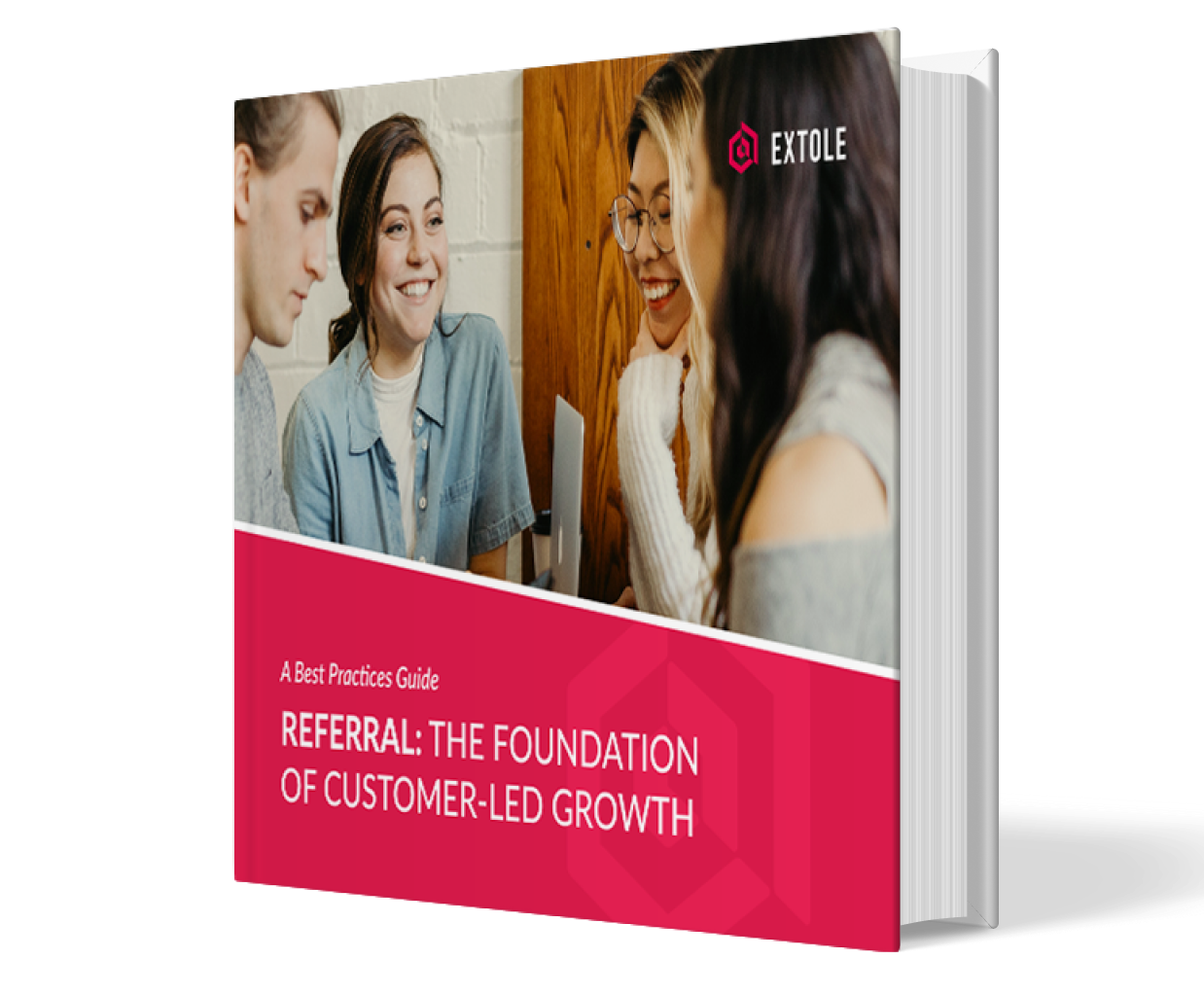
Referral Marketing – The Best Practices You Need to Know
Written by veteran referral marketers, this guide will help you optimize your referral marketing program and supercharge growth.
Get the Guide5 Factors of Robinhood’s Marketing That Built Hype and Drove Conversions
The Robinhood marketing objective was to build anticipation and excitement so that their referral program could become a viral loop-a marketing tactic that never stopped bringing in new signups. They successfully achieved their objective because of these five factors that kept the hype going and made their marketing efforts so successful:
1. SIMPLICITY OF THE REFERRAL PROCESS
Simplicity is a key factor for any referral program. If your process is confusing or your incentives aren’t clear, people are less likely to come back to your product and to tell others about it.
Referring others to Robinhood was easy, and the incentive for getting signups was clear-early access to commission-free trading. Their “thank you for signing up” page also had a clear CTA that further encouraged sharing: Thanks for joining, now share this with your friends.
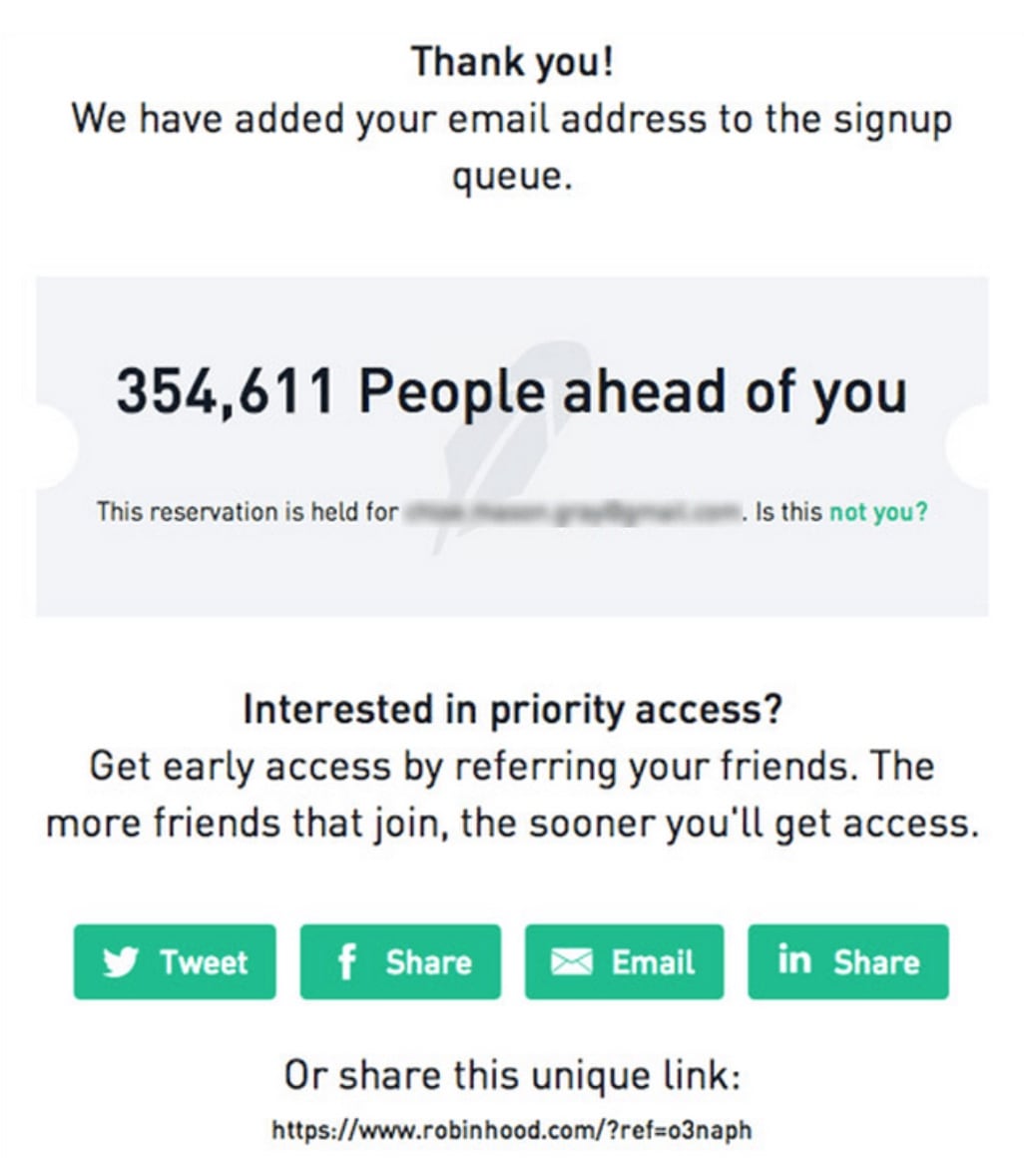
[source] Definition: Gamified “thank you for signing up” page with the referral link and social buttons
After someone signed up, all they needed to do was copy their unique referral link or click one of the social-sharing buttons to auto-generate a post about Robinhood. As soon as someone signed up using their link, they would move higher up in the early access queue.
2. INCENTIVES PERFECT FOR THEIR TARGET AUDIENCE
Robinhood’s incentives were unique and perfect for their target audience. They knew what their target audience wanted: commission-free trading. So Robinhood teased that incentive. As long as people kept driving signups, they would keep moving higher up in the queue. The higher they were, the closer they were to what they wanted.
3. EXCLUSIVITY OF THE PROGRAM
Creating the illusion of exclusivity is a common marketing strategy. People want what others have. Robinhood’s strategy was simple-they would create a large community of followers but tell that community of followers that a select few of them could be part of an elite group that gained early access to the product. All they had to do was keep referring.
Their waiting list built anticipation. The people who were most excited for Robinhood to finally launch couldn’t help but participate in the referral program in hopes that they could get higher up the list. And that anticipation, paired with the yearning to be one of the few, kept the referral signups coming.
4. GAMIFICATION OF THE WAITING LIST
People like playing games, so apart from building anticipation with a waiting list, Robinhood also gamified the entire signup and referral process by telling people exactly where they were on the waiting list.
Again, the rules were simple: refer people and “get points” to get ahead. If you stopped referring people, you’d get fewer points than the next person and “lose.” Each time someone sent their referral link to someone else, it was like they were putting a coin in a slot machine and pulling the lever. The “prize” was moving up in the queue.
The gamification of the referral program also made sure that people couldn’t stop going back to the platform and checking their position in the queue. They had to know where they were in the queue. If they moved down, they had to refer more people. If they moved up, they’d refer more people anyway.
5. TRANSPARENCY OF THEIR MESSAGING
Robinhood maintained transparency throughout the entire app development process. They told people exactly where they were on the waiting list. Their mission was simple and clearly displayed on their main landing page. And the referral program mechanics were clearly explained.
People trusted the Robinhood team. And because they trusted the team, they believed in the product and continued to be excited about its launch.
Robinhood’s referral program wasn’t mind-blowing. It was an ordinary referral program for an interesting product that was implemented in a way that kept building anticipation and excitement. These five factors led to Robinhood’s overall marketing success and kept people talking, sharing, and signing up for their platform.
The Unique Robinhood Marketing Strategy That Had Users Coming Back for More
There’s a common misconception that stock trading is only for the rich, and Robinhood wanted to shatter that misconception. And they knew a lot of other people wanted that, too. Robinhood’s referral marketing strategy wasn’t entirely unique-but their product gave people something to talk about and their referral program kept people talking.
And because people kept talking, the signups never stopped coming. If you want to build a referral program that produces results just like Robinhood’s did, book a demo to check out Extole’s referral program solutions.

